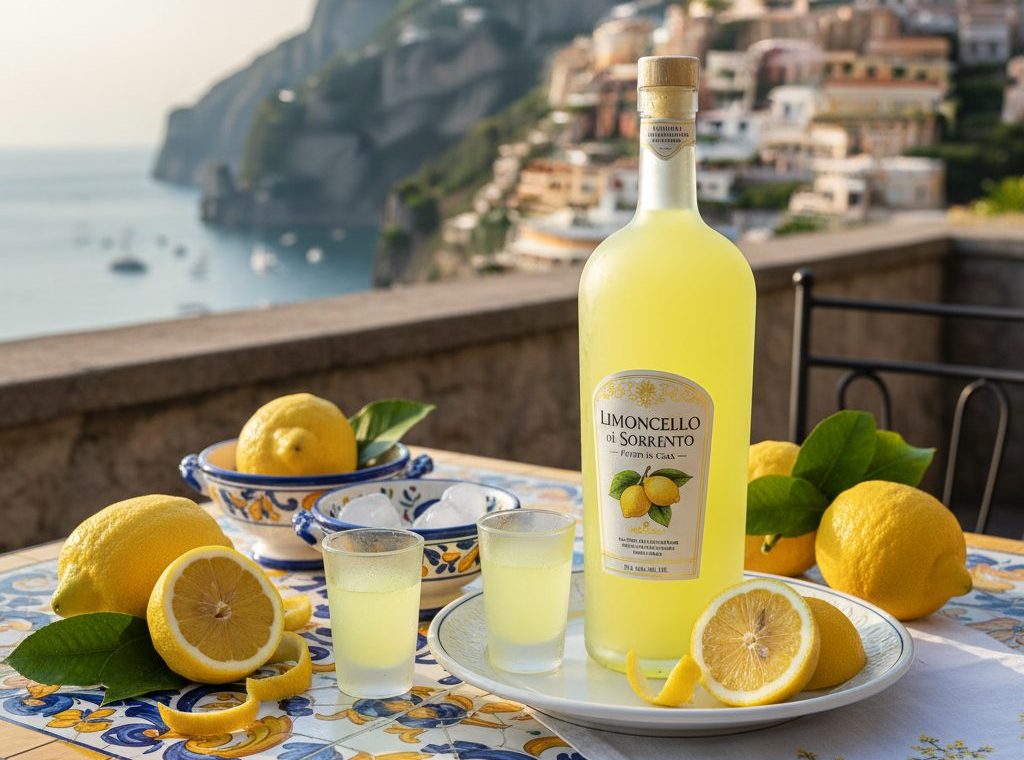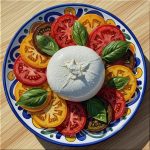Among the aromas that define the Sorrento coast and Neapolitan culture, few are as iconic as that of limoncello. This intense yellow, refreshing and fragrant liqueur has become one of the symbols of Campania’s gastronomy and, at the same time, an ambassador of the Mediterranean lifestyle throughout the world.
What is the origin of limoncello?
The true history of limoncello is surrounded by legends and local disputes. Capri, Sorrento and Amalfi all claim to be the original birthplace of this liqueur. What is clear is that it was born in the homes of these coastal areas, where families took advantage of the local lemons – especially Limone di Sorrento IGP –to create a homemade digestive.
Limoncello is made by macerating lemon peels in pure alcohol. The peel, rich in essential oils, releases its aroma and color, which are then mixed with a syrup of water and sugar. The result is a vibrant liqueur, with a fresh taste, balanced between sweetness and acidity.
History and tradition
The first documented references to limoncello date back to the beginning of the 20th century, although oral tradition places it much earlier, in the homes of peasants and fishermen who offered it to guests as a gesture of hospitality. Over time, its popularity grew and, in the 1990s, limoncello achieved international fame, being exported to restaurants and homes all over the world.
Limoncello in everyday life
In Naples and the Sorrento peninsula, limoncello is not just a drink: it is part of the hospitality. It is served chilled, almost ice-cold, at the end of a meal to aid digestion and prolong conversation at the table. Many families still prepare it at home, following recipes handed down from generation to generation.
Curiosities about limoncello
- Homemade varieties: Although the classic is lemon, there are versions made with mandarins (mandarinetto), oranges or even pistachio and melon.
- Natural color: Its bright yellow color does not come from colorants, but exclusively from the essential oils in the peel.
- Souvenir bottles: On the Amalfi and Sorrento coasts, it is common to find bottles of limoncello in the shape of lemons, typical souvenirs for tourists.
- Symbol of identity: More than a liqueur, limoncello represents the union between the land, the sea and the tradition of Mediterranean hospitality.
Traditional recipe for limoncello
If you want to bring a little piece of the Sorrento coast to your home, here is the classic recipe to prepare limoncello:
Ingredients:
- 8 to 10 Sorrento lemons (preferably organic, untreated)
- 1 liter of 95° pure alcohol (or high proof vodka if not available)
- 1 liter of water
- 700 g sugar
Preparation:
- Wash the lemons well and peel them with a peeler, avoiding the white part of the peel, as it adds bitterness.
- Place the peels in a large glass jar and cover them with the alcohol.
- Close hermetically and let macerate in a cool, dark place for at least 10 to 14 days (some homemade recipes recommend up to a month).
- After this time, prepare a syrup by dissolving the sugar in the liter of hot water. Allow to cool completely.
- Filter the alcohol to remove the lemon peels and mix with the cold syrup.
- Bottle the limoncello and let it stand for at least 1 week before consumption.
It is always served very cold, preferably directly from the freezer.
Limoncello is much more than a liqueur: it is the essence of Campania bottled, a sip of history, culture and landscape. With each glass, you relive the sun of Sorrento, the sea breeze and the warmth of Neapolitan tradition.
With love, Your Neapolitan girl!
More curiosities about Sorrento Lemons!




